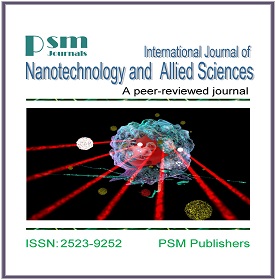Silver Nanoparticles: Synthesis, Medical Application, and Toxicity Effects
Keywords:
Silver nanoparticle, Antimicrobial action, Synthesis, Medical applications, Silver nanotoxicity.Abstract
Silver nanoparticles (AgNps) are particles of silver that range in size from 1- 100 nm. Silver nanoparticles are of unique properties and attract a lot of attention due to their wide range of potential application in medicine, electronics, cosmetics and many other fields. Although, chemical and physical methods are the major methods for AgNp synthesis, they are expensive and can absorb toxic materials into them. In this review we focus on biological synthesis of AgNps by fungi, bacteria, and plant extracts as a saver, more feasible alternative. Some recent medical applications such as Anti-inflammatory effects, cancer treatment, and mechanism of antimicrobial effect are described. We also discussed the toxicity of AgNps, its effect on environment and human health.







